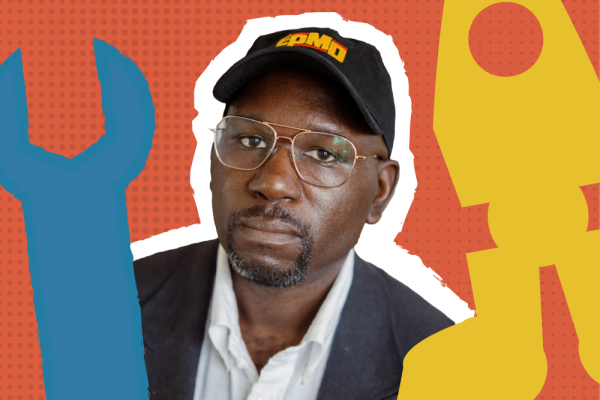I recently told a friend that I’d attended the second annual Women’s March on Saturday. Her immediate reaction was one of confusion: “There was a Women’s March this weekend? Was it a big deal? What were you marching for?”
On my walk to the March, a teenage boy stopped the group I was with to ask us the same questions.
The Women’s March in 2017 was one of the largest protests in history. Why is it that coworkers and friends who are active in social justice movements did not even realize that the march was taking place again this weekend? Why is it that I am still explaining why it was important for me to attend?
In 2017, 2.6 million people took part in 673 marches in all 50 states and 32 countries. Nearly 500,000 people marched in Washington, D.C., alone. The Women’s March has a place in history alongside the civil rights demonstrations of 1963 and the 1967 protests of the Vietnam War.
Media coverage for the 2018 Women’s March was drastically muted by comparison. This is partly because the media tend to focus on short-term protests and demonstrations of outrage. As long as a protest is new, it is newsworthy — radical, great visuals, good for debate.
But when a protest becomes a movement, and the goals become sustained activism and political engagement, the media coverage trickles away. The slogan of the 2018 Women’s March was “power to the polls,” and women and men at marches around the country shared stories of political and social empowerment, as well as opportunities for ongoing involvement.
The Women’s March may have started as a reaction to the hopelessness many felt after the presidential election of 2016, but Me Too, Time’s Up, and the record number of women running for public office are testaments to the presence of a persistent movement. These campaigns are products of frustration with a non-responsive government and a commitment to changing an ongoing system of gendered oppression. One after another, they have showcased that much more than a simple protest, the Women’s March is perpetuating a cultural shift from silence to activism.
Some people, like my engaged activist friends, did not hear about the March because this year it was no longer a “hot topic” for coverage. But others knew what was going on, and chose not to get involved. I used to think that if people knew the truth about the frequency and prevalence of sexual assault, they would have to do something. That if people only knew how bad the wage gap is, especially between white men and women of color, then we would pass legislation to end it. That when people find out how disproportionately men are represented in nearly every level of government, we will finally start to vote more women into office.
But all of this information is readily available, and, increasingly talked about. The truth is that many people do know — and do not care enough to show up, or do not think it is that bad, or do not have hope that anything will change, no matter what they do.
Women only hold 106 out of the 535 seats in the United States Congress — roughly 19.8 percent.
One-in-five women will be raped at some point in their lives, and 91 percent of survivors of rape and sexual assault are women.
The rate of female imprisonment has increased by 700 percent since 1980, a rate of growth that is 50 percent faster than that of male imprisonment.
On average, white women earn 79 cents for every dollar that white men earn. The gap is even greater for black women, who earn 63 cents on the dollar, and Hispanic or Latina women, who make 54 cents on the dollar.
It is still a radical act to attend a march advocating for equality. Hundreds of thousands of women and men gathered in D.C. and around the country for the second Women’s March on Saturday because women still do not have equality, not even close.
In 2017, the rallying cry was simple: “Welcome to your first day, we will never go away.” One year later, the promise is the same: “We are still here, welcome to your second year.”
Got something to say about what you're reading? We value your feedback!







